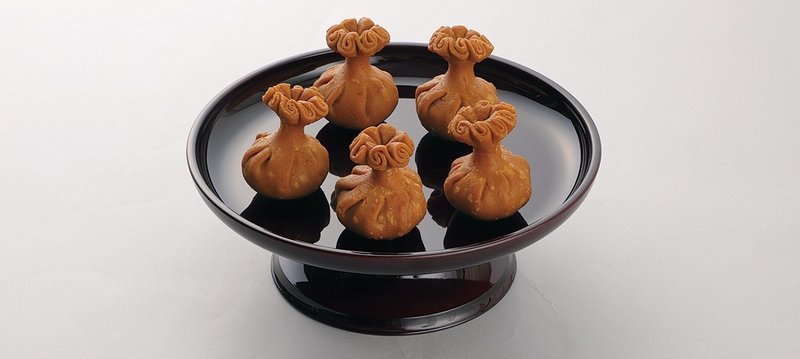
About the history of “WAGASI” as Japanese sweets [chapter 2]
※About the history of “WAGASI” as Japanese sweets [chapter 1]…
The followings are the beginnings of the confectionery by THE NATIONAL WAGASHI ASSOCIATION website.
—————————————————————————————————————-
Then, that fruits witch were picked by ancient people were dryied it in the sun, and grounded into a powder, exposed to water to remove the scum, formed into dumplings, and heated, or otherwise, to produce Japan's oldest "mochi" (rice cake).
When in the era of the tang, among the items brought back from the Tang Dynasty was something called "KARA-KUDAMONO,"as sweets of Tang Dynasty, which was prized for ritual use. It is said, Japanese sweets had influenced strongly from it. Later, it developed into "Uchikuri", "Sembei", "Kuri-no-ko-mochi", and "Funoyaki" as sweets for the tea ceremony popular in the Kamakura period.
Later, the Portuguese and Spaniards introduced Nanban confections such as “BO-RO”, ”KASTERA”, ”KONPEITOU” , ”ARUHEITOU”,”KEIRAN-SOUMEN”. These confections are still eaten today.
After a period of warfare, “WAGASHI” developed more and more during the peaceful years of Edo era.
Thus, wagashi with elaborate designs and brand names were born one after another as Kyoto's ”KYOUGASHI”(kyoto confectioneries) and Edo's ”KAMIGASHI”(Edo confectioneries) competed with each other. Many of the wagashi that are eaten today were created during the Edo period.

During the Meiji period, western ovens were introduced and baked sweets such as ”KURI-MANJU”(chestnut buns) and ”KASTERA-MANJU”(sponge cake buns) were born.
ーーーーーーーーーーーーーーーーーーーーーーーーーーーーーーーーー
I especially like “NERIKIRI” witch is one of tradithional Japanese fresh sweets. This sweets are mainly served at thick tea ceremony.
This is an artistic Japanese sweets made by coloring "nerikiri dough," which is a mixture of white bean paste and binder, and copying seasonal scenes. For example “TSUTSUJI”(azalea),”HANAMIZUKI”(dogwood flower) and so on…
Writing this article made me want to eat some delicious ”NERIKIRI”. I will have some wagashi for my afternoon snack!
mica♡matcha
この記事が気に入ったらサポートをしてみませんか?
